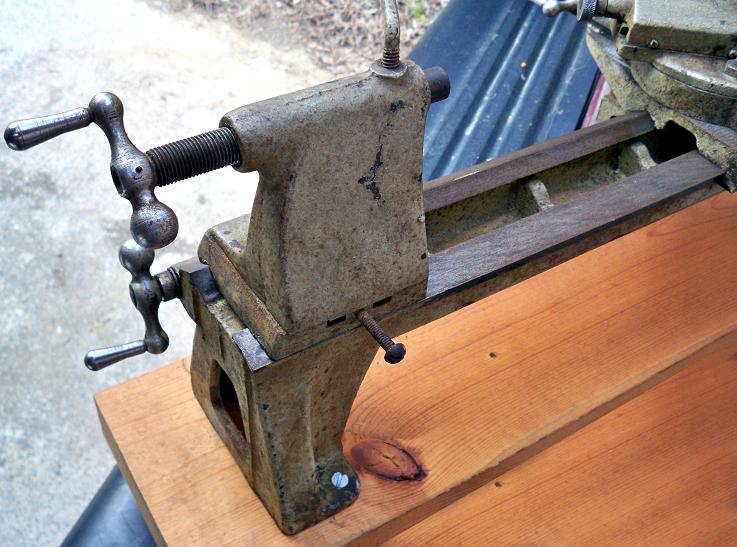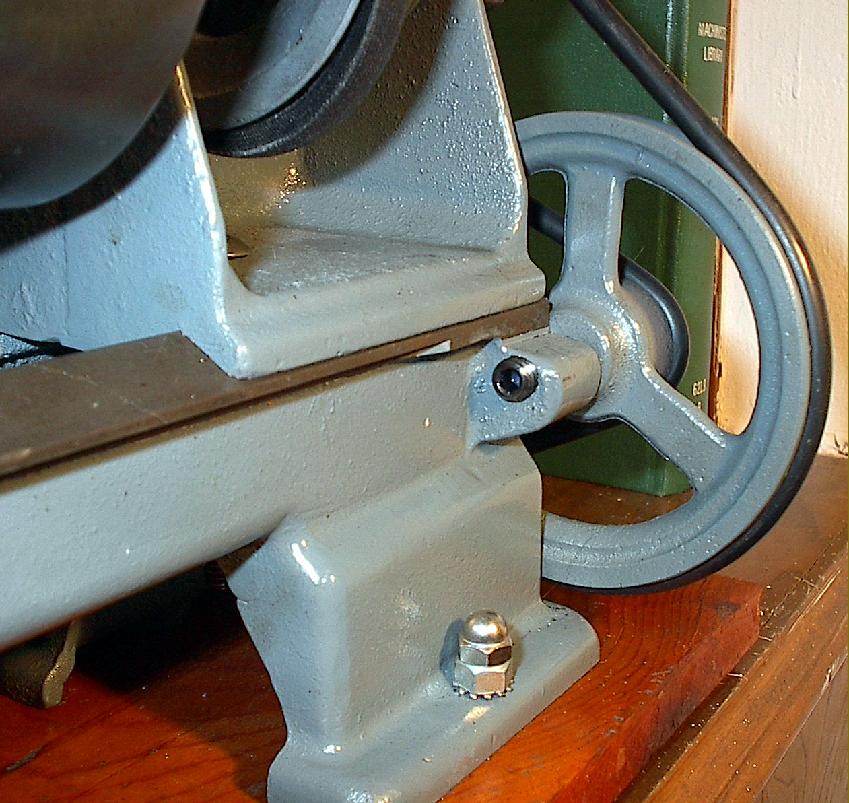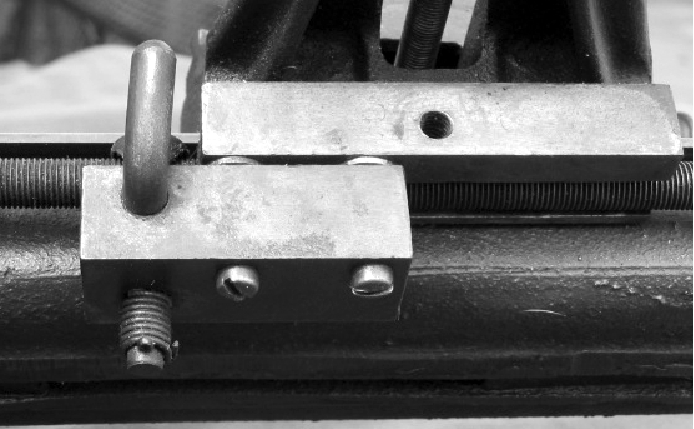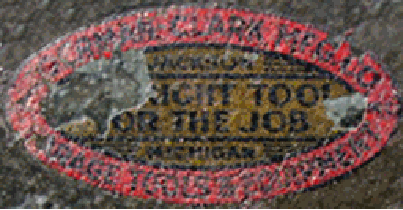|
In order to provide a simple and inexpensive longitudinal feed to the carriage, some AA "Craftsman 109" lathes have been found fitted not with changewheels but a double-reduction belt drive system - the mechanism powered by either a pulley on the end of the headstock spindle or a jackshaft (countershaft) assembly. The assembly used a small boss cast on the back of the bed (not all 109s were so fitted, however) into which fitted a shaft carrying a double-step pulley that transmitted its drive to a similar pulley on the end of the leadscrew. Some aspects of the conversion, especially the leadscrew clasp-nut arrangement, have an amateur appearance and no mention of the machine can be found in any Pre WW2 Craftsman catalogue. However, during 1940 and 1941 the lathe was advertised in motor-trade and other publications as the $27.50 New Model No. 40 Armature Lathe - with several examples coming to light in recent years carrying the remains of an oval badge proclaiming: Sherman Clark Mfg. Co. of Jackson Michigan (USA) or, alternatively, Zoerman-Clark Mfg. With the town of Jackson only 35 miles south of Lansing (home of the AA Company), there would have been a tie up between the organisations with Sherman Clark realising that a power-feed attachment would make the lathe so much more useful and commissioning a batch from the AA company for subsequent modification and sale under their own label. The basic specification was a 26-inch long bed, a capacity between centres of 18 inches a 6-inch swing and a 360° swivel top slide. As shown in the advertisements, there was a bolt-on quick-action lever feed to the carriage positioned at the tailstock end of the bed, the connection to the carriage being by a piece of twisted flat steel plate. Also supplied were the necessary attachments to mount an armature, an adjustable 3-bolt drive "carrier" to fit the headstock spindle and some sort of rotating centre for the tailstock.
The maker's badge was applied to rather roughly-finished castings and, whilst not absolutely distinct, appears to have been laid out with the maker's name across the top on a red background, "Garage Equipment and Tools" along the bottom and, on a yellow background: "The Right Tool For The Job" across the middle with the words Jackson above and Michigan below.
So far, two distinct types have been discovered, a Mk. 1 and a Mk. 2 - the former easily recognised by its bed - with a V-way at the front and a flat at the back - together with an open headstock that lacked any form of belt guard and a crude tailstock with a spindle that just screwed into the casting and a direct-acting bolt as a lock. The Mk. 2 had, like most AA-built metal lathes, a twin-V-way bed and a headstock with its casting raised at the front to provide a simple belt cover. In other respects the lathes were very similar - though the Mk. 1 lacked the boss on the back of the bed to carry the double-step pulley - with each having the same type of carriage with a compounded slide rest and an identical attachment to the leadscrew. So far no literature has been discovered featuring the Mk. 1 and should any reader discover an advertisement showing the machine, the writer would be interested to know..
|
|



















